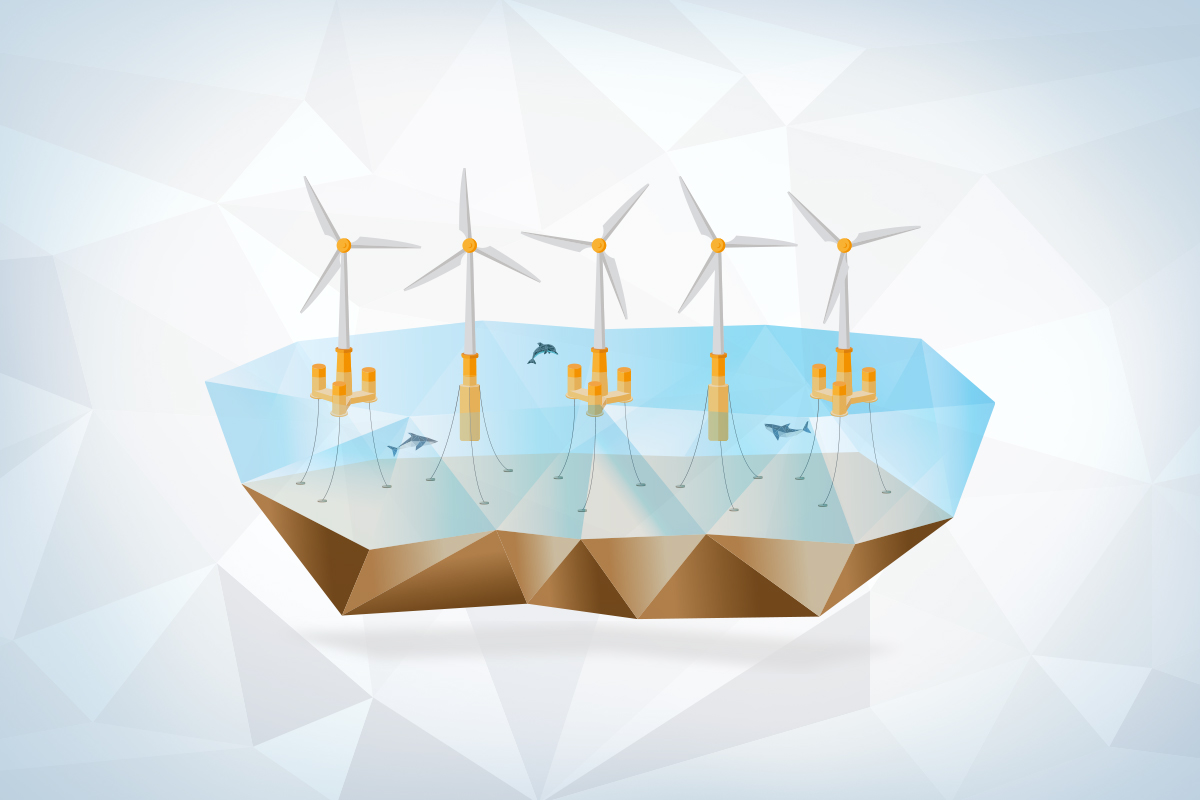News
Innovations in floating wind technologies key to futher cost reductions

9 March 2021
Floating offshore wind is maturing and has performed significant cost reductions over the past years. The technology allows Europe to unlock its full offshore wind potential and enables more countries to benefit from offshore wind in reaching their green transition objectives. Research and innovation remain key to the future competitiveness of floating offshore wind: the wind industry is for example working on new improvements to mooring and anchoring technologies.
Floating wind turbines can produce electricity further offshore and in deeper waters than the traditional bottom-fixed turbines that today account for almost all installations in Europe. For many European Sea basins, such as the Mediterranean or the Black Sea, floating offshore wind is a favourable technology. It will allow more and more countries to benefit from offshore wind. 150 GW of floating offshore wind could be spinning in Europe by 2050. This would mean that by then, one-third of all offshore wind installations could be floating.
For this to happen, the costs of floating offshore wind must continue their downward trend. WindEurope estimates that they could reduce to 40-60€/MWh if Governments put the right policies in place.
First, Europe must continue building up its floating project pipeline. Europe hosts today the only two floating offshore wind farms in the world: The 30 MW Hywind Scotland project in the UK and the 24 MW Windfloat Atlantic project in Portugal. 7 EU countries intend to install floating offshore wind in the next decade (France, UK, Portugal, Italy, Spain, Norway, Sweden). Now Ireland, Greece, Bulgaria, and Romania are also looking into it. WindEurope expects as much as 7 GW of total installed floating wind capacity in Europe by 2030.
Second, technological innovation must address key challenges in designing floating offshore wind turbines. This concerns for instance the mooring and anchoring technologies that help to stabilise the floating turbines and limit their movement during extreme weather conditions with strong waves.
Here the EU-funded Corewind project comes in. It aims at furthering cost reductions and enhancing the performance of floating wind technology. The project explores the optimisation of mooring systems, anchoring systems and dynamic cables for different floating structures. It carried out virtual simulations for two different floating offshore wind sites to explore the potential for cost reduction through technology innovation. One for a site off the Canary Islands where the simulations estimated that the costs for mooring systems could be reduced by as much as 60%. And a second one for a site located in the USA which resulted in a cost reduction potential of 55%. The project focused on two different floating wind technologies, semi-submersible and spar. The results are confirming the likelihood of both technologies being mass deployed. WindEurope additionally sees potential for other floating technologies that have not been part of the simulation, such as barge and tension-leg platforms.
This work will support floating offshore wind in making its fair contribution to Europe’s 2050 decarbonisation targets. And they will help Europe in keeping its technology leadership in floating wind in the face of competition from Japan and South Korea.

